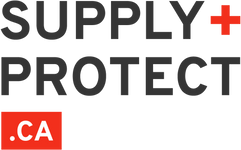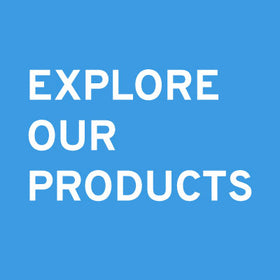Does your business need gloves for COVID-19 protection?
Learn the difference between different types of gloves, and determine what’s best for your organization

The CDC has continued to refine their recommendations for keeping safe from COVID-19, including whether or not to wear gloves. While avoiding non-essential outings and travel remains the most effective method of protecting yourself and others, some workplaces and individual circumstances may benefit from the use of high-quality gloves. We’ve outlined the different types of gloves you’ll find on the market, the things to look out for to ensure they’re authentic, and the list of jobs and circumstances that the CDC indicates glove-wearing is important for.
How do gloves help prevent the spread of COVID-19?
The FDA has yet to approve any type of gloves for specific protection against or prevention of COVID-19. They have, however, issued a document on the enforcement policy of gowns, gloves, and apparel for healthcare professionals.
According to the CDC, gloves can provide a layer of protection against germs. And while transmission via respiratory droplets is still the most common way to contract the virus, “transmission of novel coronavirus to persons from surfaces contaminated with the virus” is still a possibility.
The most helpful gloves, then, are disposable ones, as contaminated surfaces will contaminate the gloves you are wearing too. That’s why understanding when and where to wear them, and how to properly remove them, is key to making sure they are actually effective.
Let’s start by outlining the aspects of gloves that make them effective.
There are many different types of gloves on the market, made from various materials. Here, we’ve laid out the materials and indications that the CDC recommends you look out for.
Powder-free
Once popular because of easy wear and removal, as well as tear-resistance, powdered gloves have now been proven to spread pathogens and germs. In fact, the FDA banned them from healthcare facilities for this reason in 2017, and their usage for disease protection has declined since then in other institutions as well.
It’s important to look for “Powder-Free” on any PPE gloves.
Length
Wearing gloves that cover your wrist and a bit of your forearm can provide an extra level of protection from germ exposure. The “length” noted on gloves is the measurement from the fingertip to the wrist opening. Generally, 9” gloves will cover just above the wrist bone, 15” gloves midway up the forearm, and 24” gloves past the elbow. For household cleaning, no more than 12 inches should be an effective glove length for most people. For health care workers, or jobs in which hands and arms are submersed in solutions or dirtied, longer gloves are recommended.
Thickness
Most gloves are anywhere from 2-15 millimeters thick.
In general, thicker gloves provide more protection, but also can make it more challenging to work. 7-8 millimeters is a good sweet spot.
Common business standards
While the FDA hasn’t specifically authorized any type of gloves for protection from COVID-19, several business standardization organizations, such as CE, ISO, ASTM, and TUV have certified different glove types and brands for use across various facilities. Look out for these certification labels when purchasing PPE gloves for your organization.
Finger or aggressively-textured
You will find that gloves are labelled with various texture types for different needs. Finger-textured, or aggressively-textured, gloves are purposed for healthcare workers, or anyone needing excellent grip while working. The roughened texture provides greater thickness, which only enhances the gloves’ level of protection.

When do and don’t I need to wear a face mask?
While mask mandates and protocols vary by region, the CDC recommends that face coverings are worn any time that you are in a public place. Namely, this means that any time you are outside of your own house or vehicle, wearing a mask is recommended in order to keep yourself and others protected from COVID-19. Exceptions, such as for certain performances, physical activities, correctional institutions, and workplaces, do apply. For full details, visit your provincial government website.
Children under two years do not need to wear a face mask. You also do not need to wear a face mask if you:
- have a medical condition that makes wearing a mask difficult;
- are unable to put on or remove your mask without the help of someone else, or;
- are receiving accommodations for a disability
How can I know that I’m buying a safe and approved mask?
For Face Shields
Ensure that the company you are purchasing a face shield from lists their certification and licensing. With any doubt, reach out to the company for information about testing and experiments completed, etc. All products found on Supply+Protect are from vendors who provided:
- A copy of the Medical Device Establishment License (MDEL), when applicable
- The Natural Product Number (NPN) for alcohol-based items, such as hand sanitizer
- Copies of certifications and testing results for products, when applicable
- Evidence of insurance
References or a demonstrated track record
For N95s
Check to see if NIOSH has certified your N95 respirator by entering the approval number found on the mask in the NIOSH database. If your mask is fraudulent or unauthorized, stop using it and begin wearing a certified one.
For KN95s
Put on your face mask, hold and activate a lighter six inches from your mouth, and try to extinguish the flame by blowing on it. If you aren’t able to blow it out after several tries, it’s authentic; if you can put the flame out, then it’s a fraudulent respirator. If this is the case, stop using it and begin wearing a certified one.
For Cloth Masks
Only purchase cloth masks that are labelled as being crafted with at least 2 layers of fabric and 100% cotton.
Stock up on your facility’s PPE mask needs on one quality, efficient, and Canadian site.
Browse Cloth Masks
Browse KN95s
Browse Face Shields
Browse Level 1 Procedural Masks
Browse Level 2 Procedural Masks

